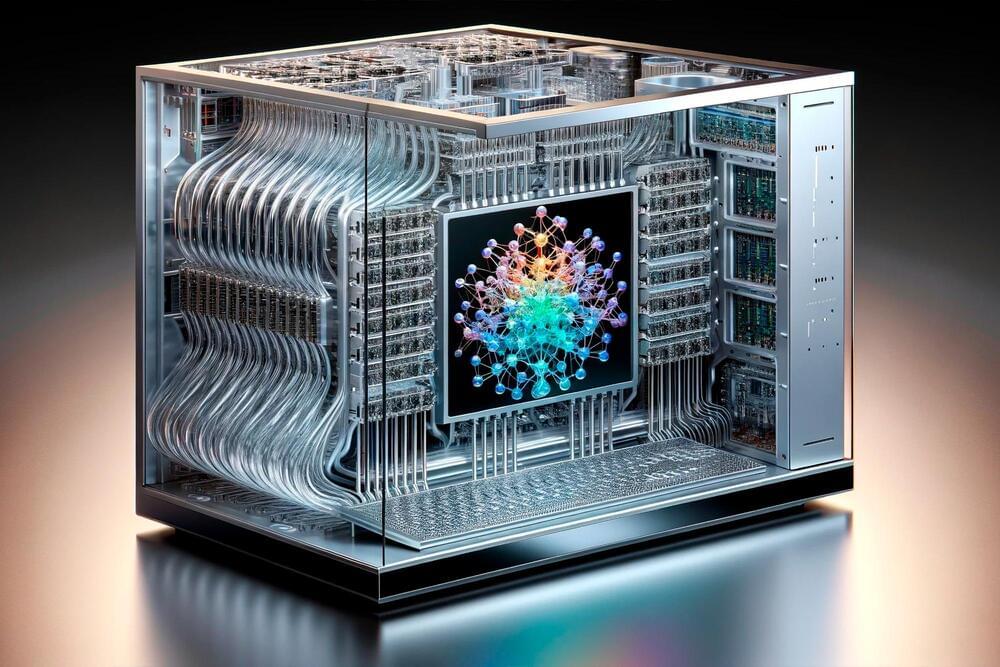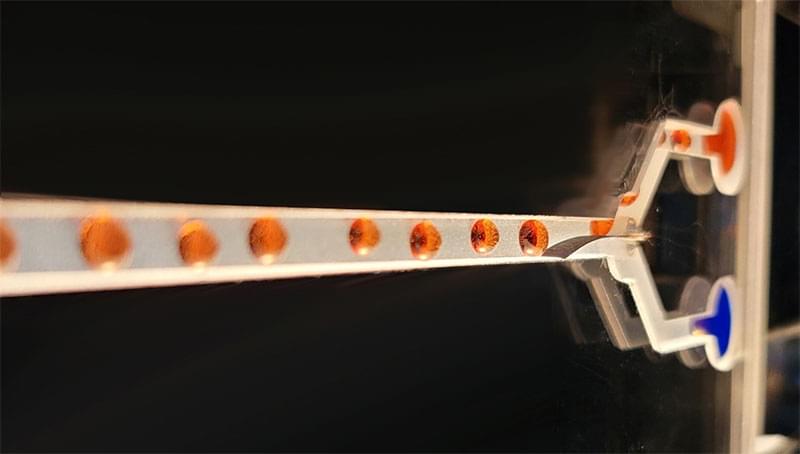Join the discussion on this paper page.
A new study shows how quantum computing can be harnessed to discover new properties of polymer systems central to biology and material science.
The advent of quantum computing is opening previously unimaginable perspectives for solving problems deemed beyond the reach of conventional computers, from cryptography and pharmacology to the physical and chemical properties of molecules and materials. However, the computational capabilities of present-day quantum computers are still relatively limited. A newly published study in Science Advances fosters an unexpected alliance between the methods used in quantum and traditional computing.
The research team, formed by Cristian Micheletti and Francesco Slongo of SISSA in Trieste, Philipp Hauke of the University of Trento, and Pietro Faccioli of the University of Milano-Bicocca, used a mathematical approach called QUBO (from “Quadratic Unconstraint Binary Optimization”) that is ideally suited for specific quantum computers, called “quantum annealers.”
ReplaceAnything by modelscope
Posted in futurism
Alibaba just released on Hugging Face.
ReplaceAnything as you want: Ultra-high quality content replacement.
Discover amazing ML apps made by the community.
Link:
Students at Ferris State University in Michigan will soon be sharing the classroom with AI-powered freshman “students” who will enroll in classes alongside them, MLive reports.
And no, they won’t have humanoid robot bodies — they’ll be interacting with students via computers, microphones, and speakers.
In an experiment led by associate professor Kasey Thompson, AI students dubbed Ann and Fry will be listening — or scanning through? — lectures, work on assignments, and even actively participate in discussions with other students, per the report.
Soft robots, medical devices, and wearable devices have permeated our daily lives. KAIST (Korea Advanced Institute of Science and Technology) researchers have developed a fluid switch using ionic polymer artificial muscles that operates at ultra-low power and produces a force 34 times greater than its weight. Fluid switches control fluid flow, causing the fluid to flow in a specific direction to invoke various movements.
KAIST announced on the 4th of January that a research team under Professor IlKwon Oh from the Department of Mechanical Engineering has developed a soft fluidic switch that operates at ultra-low voltage and can be used in narrow spaces.
The results have been published in Science Advances (“Polysulfonated Covalent Organic Framework as Active Electrode Host for Mobile Cation Guests in Electrochemical Soft Actuator”).
https://arstechnica.com/security/2024/01/a-previously-unknow…or-a-year/ # Linux Comments: https://news.ycombinator.com/item?id=38942102
Based on Mirai malware, self-replicating NoaBot installs cryptomining app on infected devices.
Ichthyosis refers to a group of skin disorders that lead to dry, itchy skin that appears scaly, rough, and red. Your health care provider may be able to diagnose ichthyosis with a genetic test that detects the mutated gene usually from a blood sample or a swab from the mouth. Find out more:
What is ichthyosis? It is a disorder that causes dry, thickened skin that may look similar to fish scales.
In a significant breakthrough, Microsoft and the Pacific Northwest National Laboratory have utilised artificial intelligence and supercomputing to discover a new material that could dramatically reduce lithium use in batteries by up to 70%. This discovery, potentially revolutionising the battery industry, was achieved by narrowing down from 32 million inorganic materials to 18 candidates in just a week, a process that could have taken over 20 years traditionally.
#microsoft #ai #gravitas.
About Channel:
WION The World is One News examines global issues with in-depth analysis. We provide much more than the news of the day. Our aim is to empower people to explore their world. With our Global headquarters in New Delhi, we bring you news on the hour, by the hour. We deliver information that is not biased. We are journalists who are neutral to the core and non-partisan when it comes to world politics. People are tired of biased reportage and we stand for a globalized united world. So for us, the World is truly One.
Adversaries can deliberately confuse or even “poison” artificial intelligence (AI) systems to make them malfunction—and there’s no foolproof defense that their developers can employ. Computer scientists from the National Institute of Standards and Technology (NIST) and their collaborators identify these and other vulnerabilities of AI and machine learning (ML) in a new publication.
Their work, titled Adversarial Machine Learning: A Taxonomy and Terminology of Attacks and Mitigations, is part of NIST’s broader effort to support the development of trustworthy AI, and it can help put NIST’s AI Risk Management Framework into practice. The publication, a collaboration among government, academia, and industry, is intended to help AI developers and users get a handle on the types of attacks they might expect along with approaches to mitigate them—with the understanding that there is no silver bullet.
“We are providing an overview of attack techniques and methodologies that consider all types of AI systems,” said NIST computer scientist Apostol Vassilev, one of the publication’s authors. “We also describe current mitigation strategies reported in the literature, but these available defenses currently lack robust assurances that they fully mitigate the risks. We are encouraging the community to come up with better defenses.”









